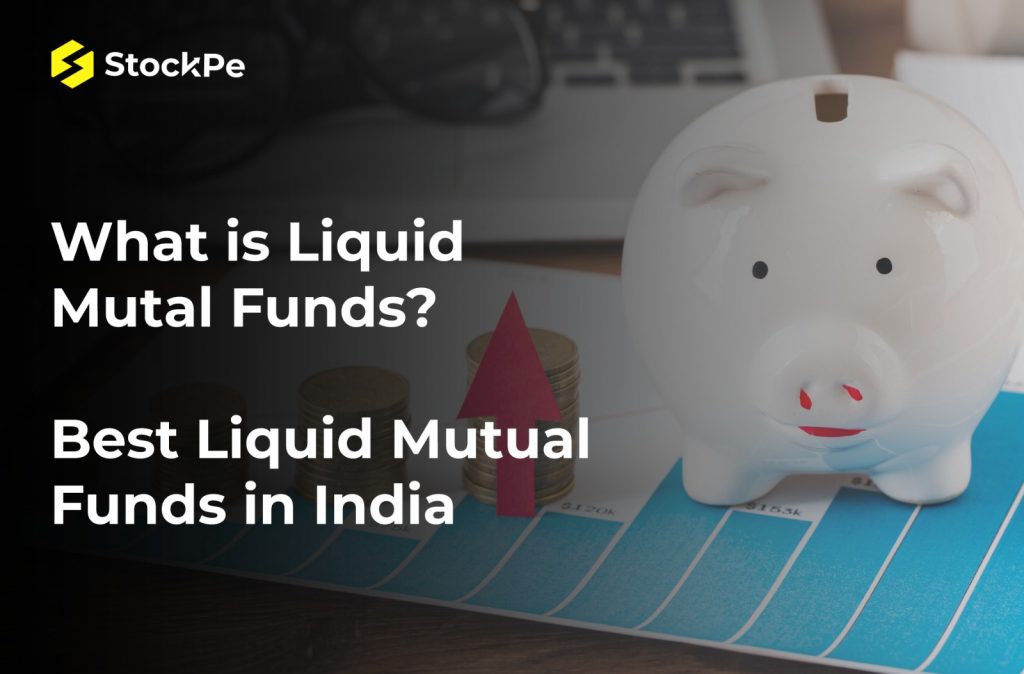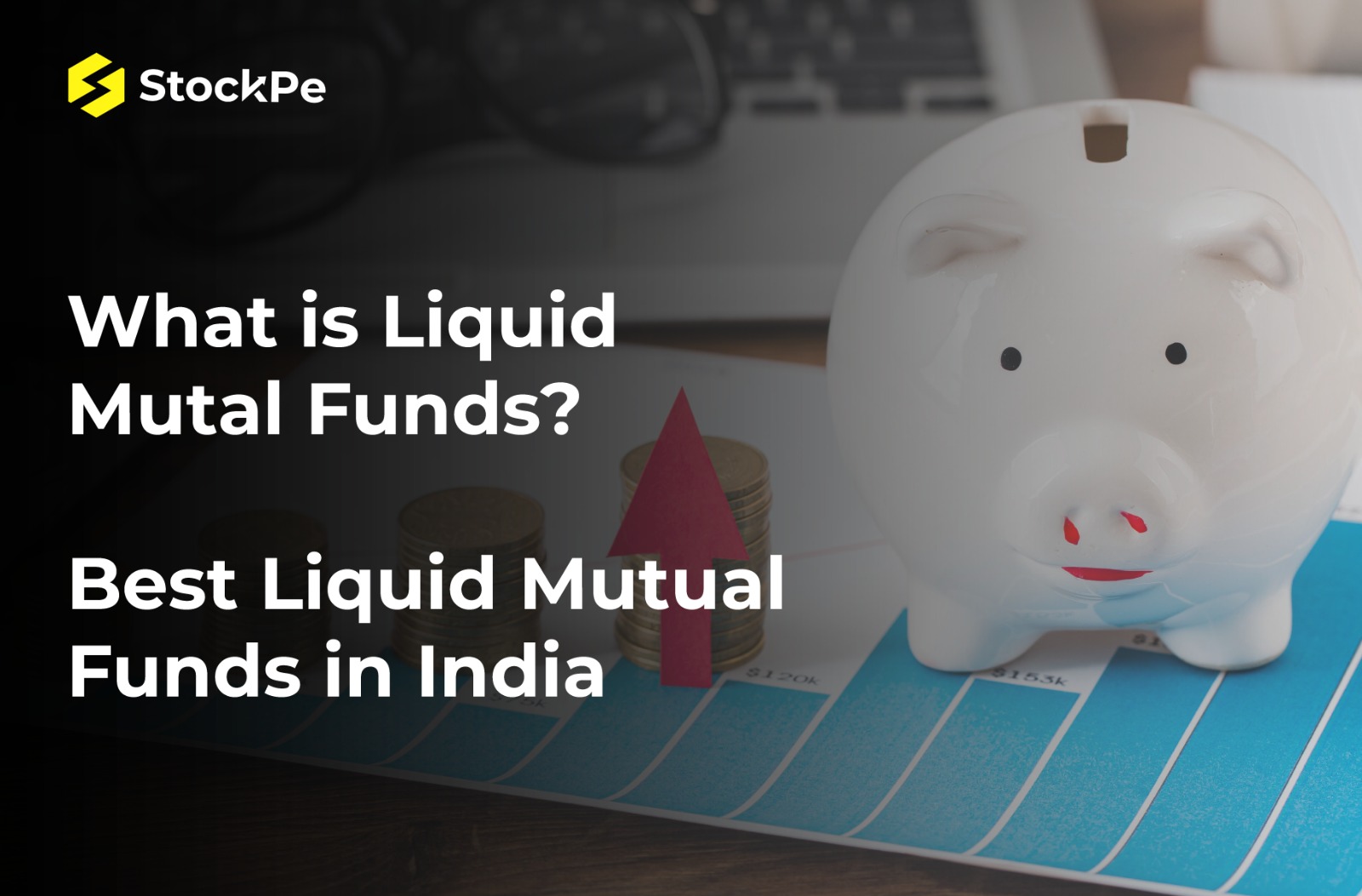In this blog, we discuss What are Liquid Mutual Funds, when and if you should still invest in Liquid Mutual Funds. We also picked out the best Liquid Mutual Funds in the country that have yielded high returns in the past consistently.

Who should invest in Liquid Mutual Funds?
Let’s say you want to buy a Burberry Scarf in 3 months. This is the type of investment goal for which Liquid Mutual Funds are the best. If your investment horizon is less than 13 months and if you want higher returns for a short period of investment, Liquid Mutual Funds is the best investment option.
Liquid funds do not have any exit load (the amount that you pay when you leave a mutual fund), or entry load.
What are Liquid Mutual Funds?
Liquid Mutual Funds are a type of Debt Funds that invest in money market securities and debt securities with a maturity of up to 90 days.
These are open-ended mutual funds. This means that these funds are available for repurchase and subscription continuously.
There is no Minimum or Maximum duration to Hold Liquid Mutual Funds. So, if you invest in a liquid fund long term for more than 1 year, you will have to pay long term capital gain tax which is comparatively lower.
You can hold Liquid Mutual Funds for one day or for any number of years unless the Mutual Fund company decides to resolve funds.
For Example:
Let’s say you subscribed to the Liquid Mutual Funds from Nippon for Rs.200 every month for five months. Let us say, Nippon AMC decides to dissolve the fund in two months.
For Example:
You will receive the current Net Asset Value of your fund. This is the value of your Rs.400 in the market after 2 months of your SIP.
Usually,
Liquid Mutual Funds are advertised as the “safer” option with higher returns compared to FD or Savings Bank Accounts that offer comparatively mediocre returns.
This means,
Until March 31,
If you invested in FD and fell under the 30% tax slab, and your Rate of Interest is 7%, you have to pay a 30% tax on 7%.
Return in FD – 4.9%
If you invest in Mutual Funds, you have to pay 20% on 7%, and the Best Part, if Inflation is 5%, you don’t have to pay tax on all 7%, and instead only on the 2% Excess ( Interest Rate – Inflation Rate) that is actually your gain.
This means, if you invest in Mutual Funds, you have to pay 20% tax on only 2%. Delicious! Isn’t it?
Return in Mutual Fund – 6.6%
Drum Roll Please!
SEBI announced that from March 31
No Indexation Benefits on Debt Mutual Funds!!!
This means that, no more tax benefits for parking money in Debt Mutual Funds long term. So many investors may have to choose between just FD and Stocks.
This will hurt not just Debt Mutual Funds but also the Debt Funds launched by the government to fund infrastructure.
Investors subscribe to these funds since they were target maturity funds. This means, Tax Benefits, Certainty with Returns and Money parked somewhere safely long term.
Now, with Indexations Benefits scraped, investors will no longer want to invest in these funds.
The Sneaky Bill:
On 24 March, this rule was tabled in the Finance Bill announced in the parliament.
Just a week before March 31, when the financial year was just coming to an end, the government decided to kill this tax benefit.
This was not announced in the budget and was a sneaky surprise to all investors and Asset Management Companies.
~ ₹8 lakh crores is invested in debt mutual funds in India. Around 11–14% of the revenues that mutual fund companies make come from the fee charged for servicing investors.
A lot of companies issue bonds which debt mutual funds buy and lend money to these companies. Banks and Mutual Funds compete to buy Bonds of Companies for lower prices and offer loans at low interest rates. Now, Mutual Funds do not hold indexation benefits anymore. So, Banks will have power now, to increase and charge high interest rates from these companies.
The New Development:
On March 29, SEBI announced the creation of a
Corporate Debt Market Development Fund
SEBI has said that this will be a Backstop facility (rescue fund of sorts) for specified debt mutual funds
SEBI has set up an Initial corpus of Rs 3,000 crores for this fund.
– This fund will be funded by debt MFs (10% from AMC equity capital, 90% from schemes)
– This fund will have sovereign guarantees like bonds and will be leveraged 10 times. (High Liquidity)
– This fund can be used to purchase investment grade corporate debt in times of stress.
– This fund can be triggered only by a systemic event, and not by any specific Mutual Fund facing trouble.
-SEBI Board will determine when to trigger this fund based on model and parameters
– SEBI will release more details on how to purchase the fund and pricing mechanism in the upcoming published framework. (Yet To be Announced).
These changes may either safeguard Mutual Fund investments or prompt Fund managers to invest more in this Fund and take more risk.
Cons of investing in Liquid Mutual Funds:
Credit Rating Risk:
Let us say,
Gemini Mutual Fund invested in many companies including the bonds of Balrampur Ind which is a small cap company.
Small Cap company means that the company has a small market cap. For Eg., MSMEs
Now, Gemini Mutual Fund has 4.33% invested in Balrampur.
One fine day, Krixis, a 3rd-party Credit Rating Agency, reduces the credit rating of Balrampur to A3 since Balrampur has many loans that it has not yet paid.
This will impact Gemini Mutual Fund. There is a possibility that Total Fund value can fall up to 10% depending upon how diversified the portfolio is.
Fund Managers should do due diligence of the financial health of a company before including a stock in their fund.
Investors should also do due diligence of the credit rating of all the stocks in the fund, the past performance of the fund, the expense ratio and stay updated.
Delivery:
Unlike the money you have deposited in your Savings Bank account or Fixed Deposit account, you cannot waltz into the bank and withdraw money immediately.
If you invest in a liquid fund, you can withdraw after 1 day after you have requested for withdrawal (Tth Day) – (T+1)th Day
Best Liquid Mutual Funds to invest in:
| Funds | Rating | 1 Yr Ret (%) | Net Assets (Cr) |
| Aditya Birla Sun Life Liquid Fund – Direct Plan | 4 | 5.85 | 28,810 |
| Axis Liquid Fund – Direct Plan | 4 | 5.82 | 21,367 |
| Bandhan Liquid Fund – Direct Plan | 3 | 5.78 | 11,962 |
| Bank of India Liquid Fund – Direct Plan | 4 | 5.81 | 403.00 |
| Baroda BNP Paribas Liquid Fund – Direct Plan | 5 | 5.85 | 5,477 |
| Canara Robeco Liquid Fund – Direct Plan | 2 | 5.82 | 2,548 |
| DSP Liquidity Fund – Direct Plan | 3 | 5.76 | 13,583 |
| DSP NIFTY 1D Rate Liquid ETF | — | 4.85 | 238.00 |
| Edelweiss Liquid Fund – Direct Plan | 4 | 5.78 | 1,543 |
| Franklin India Liquid Fund – Direct Plan | 3 | 5.74 | 1,511 |
| HDFC Liquid Fund – Direct Plan | 2 | 5.74 | 49,009 |
| HSBC Liquid Fund – Direct Plan | 4 | 5.81 | 12,044 |
| ICICI Prudential Liquid Fund – Direct Plan | 2 | 5.72 | 47,246 |
| ICICI Prudential S&P BSE Liquid Rate ETF | — | 5.26 | 4,317 |
| IDBI Liquid Fund – Direct Plan | 3 | 5.74 | 763.00 |
| IIFL Liquid Fund – Direct Plan | 2 | 5.64 | 602.00 |
| Indiabulls Liquid Fund – Direct Plan | 1 | 5.52 | 213.00 |
| Invesco India Liquid Fund – Direct Plan | 3 | 5.74 | 5,752 |
| ITI Liquid Fund – Direct Plan | 2 | 5.60 | 32.00 |
| JM Liquid Fund – Direct Plan | 4 | 5.76 | 1,427 |
| Kotak Liquid – Direct Plan | 2 | 5.74 | 33,221 |
| Kotak Nifty 1D Rate Liquid ETF | — | — | 1.00 |
| LIC MF Liquid Fund – Direct Plan | 3 | 5.75 | 5,996 |
| Mahindra Manulife Liquid Fund – Direct Plan | 5 | 5.85 | 514.00 |
| Mirae Asset Cash Management Fund – Direct Plan | 3 | 5.80 | 5,983 |
| Motilal Oswal Liquid Fund – Direct Plan | 1 | 5.37 | 485.00 |
| Navi Liquid Fund – Direct Plan | 5 | 5.74 | 96.00 |
| Nippon India ETF Nifty 1D Rate Liquid BeES | — | 4.74 | 7,004 |
| Nippon India Liquid Fund – Direct Plan | 3 | 5.78 | 25,358 |
| Parag Parikh Liquid Fund – Direct Plan | 1 | 5.37 | 1,457 |
| PGIM India Liquid Fund – Direct Plan | 3 | 5.80 | 810.00 |
| Quant Liquid – Direct Plan | 5 | 5.71 | 1,562 |
| Quantum Liquid Fund – Direct Plan | 2 | 5.51 | 628.00 |
| SBI Liquid Fund – Direct Plan | 3 | 5.75 | 57,053 |
| Sundaram Liquid Fund – Direct Plan | 4 | 5.82 | 4,170 |
| Tata Liquid Fund – Direct Plan | 3 | 5.72 | 18,212 |
| TRUSTMF Liquid Fund – Direct Plan | 2 | 5.79 | 205.00 |
| Union Liquid Fund – Direct Plan | 4 | 5.82 | 1,689 |
| UTI Liquid Cash Fund – Direct Plan | 4 | 5.81 | 31,463 |
| WhiteOak Capital Liquid Fund – Direct Plan | 1 | 5.53 | 197.00 |
Researched by StockPe’s In-House Research Team led by Analyst Raj Pandey.
Disclaimer:
Not Advisory. StockPe does not recommend or advise any investors to invest in any of these funds.
How do Liquid Mutual Funds Work?
Liquid Mutual Funds invest in highly rated commercial paper and other short-term money market instruments to minimize interest risk.
Interest Rate Risk:
Interest Risk means when interest rate increases, value of the asset decreases.
For Example,
If an old bond is subscribed to at 5%
If a new bond is released at a higher interest rate 8%, the value of the old bond reduces from Rs. 200 to Rs.160 to enable the bond to provide returns at 8% and match up with the new bond. The interest you receive will be constant at this rate, say Rs.50 but the end value of the bond decreases.
Why is this relevant?
Liquid Mutual Funds minimize interest risk incurred by investing in bonds by investing some amount in the short-term Money Market, since currency, be it Rupee or Dollar acts as a hedge against interest risk short-term.
This is because, when RBI or Federal Bank hikes repo rate, currency is a safer instrument to invest in.
Do you Know?
Debt Fund:
A fund that pools money into different assets just like Mutual Fund but the assets have a fixed interest rate.
Examples of Debt Assets:
- Loans
- Credit Cards
- Bonds
- Currency




